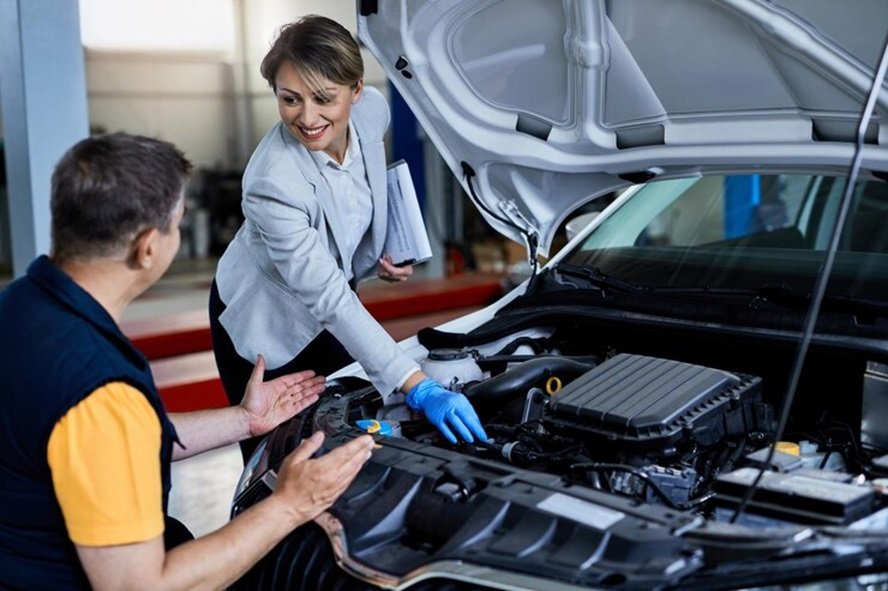Owning a vintage car is not just about possessing a piece of automotive history; it’s about preserving the beauty and character of a bygone era. Classic cars demand special care and attention, especially when it comes to washing and maintaining their pristine appearance. Unlike modern vehicles, vintage cars often feature delicate paintwork, chrome trim, and unique materials that require specific techniques to clean without causing damage. In this article, we’ll explore classic car wash techniques that will help you keep your vintage ride shining like new.
Understanding the Importance of Proper Washing Techniques
Classic cars are often more susceptible to wear and tear than modern vehicles due to their age and the materials used in their construction. Regular washing is crucial to maintain the car’s appearance and prevent long-term damage from environmental factors like dirt, road grime, and bird droppings. However, improper washing techniques can lead to scratches, swirls, and even corrosion. Understanding the right approach is essential to preserving your vintage vehicle’s value and beauty.
Essential Supplies for Washing a Classic Car
Before diving into the washing process, it’s important to gather the right supplies. Using high-quality, gentle products will ensure that your classic car is cleaned without causing any harm.
1. Car Shampoo
- Why: Unlike household detergents, car shampoos are formulated to clean without stripping the wax or damaging the paint.
- What to Look For: Choose a pH-balanced, non-abrasive car shampoo specifically designed for classic or delicate paintwork.
2. Soft Wash Mitt
- Why: A soft, microfiber wash mitt is gentler on the paint and less likely to cause scratches compared to sponges or brushes.
- What to Look For: Opt for a mitt made from high-quality microfiber or lambswool.
3. Two Buckets
- Why: The two-bucket method helps prevent dirt from being reintroduced to the car’s surface, reducing the risk of scratches.
- What to Look For: Use one bucket for clean, soapy water and another for rinsing the wash mitt.
4. Microfiber Towels
- Why: Microfiber towels are ideal for drying because they are highly absorbent and gentle on the paint.
- What to Look For: Use multiple microfiber towels to dry different sections of the car, preventing streaks and water spots.
5. Detailing Brushes
- Why: These brushes help clean intricate areas like emblems, grilles, and wheel spokes without scratching.
- What to Look For: Choose brushes with soft, natural bristles.
6. Car Wax or Sealant
- Why: Wax or sealant provides a protective layer on the paint, enhancing shine and protecting against contaminants.
- What to Look For: Use a product that is suitable for classic cars and provides UV protection.
Step-by-Step Guide to Washing Your Classic Car
1. Prepare the Car and Washing Area
- Location: Wash your classic car in a shaded area or garage to prevent the sun from drying the soap and water too quickly, which can cause water spots.
- Inspect the Car: Before washing, inspect the car for any areas that need special attention, such as chips in the paint or loose trim.
2. Rinse the Car
- Method: Start by rinsing the car with a gentle stream of water to remove loose dirt and debris. Avoid using a high-pressure hose as it can damage delicate areas.
- Tips: Work from top to bottom, ensuring that all areas are thoroughly wet.
3. Wash the Car Using the Two-Bucket Method
- Process: Fill one bucket with car shampoo and water, and the other with clean water for rinsing the wash mitt.
- Technique: Dip the wash mitt into the soapy water, then wash one section of the car at a time, using straight, overlapping strokes. After each section, rinse the mitt in the clean water bucket before re-soaping.
- Areas of Focus: Pay special attention to areas prone to dirt accumulation, such as the lower body panels, wheel arches, and behind-the-wheels.
4. Clean the Wheels and Tires
- Separate Tools: Use a separate wash mitt and brush for the wheels and tires to avoid cross-contamination with the car’s paint.
- Wheel Cleaner: Apply a wheel cleaner suitable for the type of wheels on your vintage car. Use a soft brush to clean between the spokes and around the wheel nuts.
5. Rinse Thoroughly
- Final Rinse: After washing all sections, give the car a final rinse with clean water. Ensure that no soap residue remains, especially in crevices and around trim pieces.
- Underbody Rinse: If possible, lightly rinse the underbody to remove any dirt or road salt that could cause corrosion.
6. Dry the Car Carefully
- Drying Process: Use microfiber towels to gently dry the car. Start with the roof and work your way down, using a dabbing motion rather than wiping to avoid scratching.
- Detail Drying: Use a soft detailing brush or compressed air to remove water from around emblems, trim, and other small areas.
Additional Detailing Tips for Classic Cars
Beyond washing, detailing your classic car regularly is essential for keeping it in showroom condition. Here are some additional tips:
1. Clay Bar Treatment
- Purpose: A clay bar removes bonded contaminants from the paint surface, such as tar, tree sap, and industrial fallout, that washing alone can’t eliminate.
- Application: After washing and before waxing, gently rub a clay bar over the car’s surface, using a lubricant spray to prevent scratches.
2. Polishing
- Why: Polishing helps to remove minor scratches, swirls, and oxidation, restoring the paint’s original shine.
- How: Use a fine polish with a soft foam applicator pad, working in small sections. Always follow the manufacturer’s instructions to avoid over-polishing.
3. Waxing or Sealing
- Protection: Wax or paint sealant provides a protective barrier against the elements, enhancing shine and making future washes easier.
- Method: Apply the wax in thin, even layers using a soft applicator pad. Allow it to haze, then buff off with a clean microfiber towel.
4. Chrome and Metal Polishing
- Chrome: Use a chrome-specific polish to restore the shine of chrome bumpers, trim, and wheels. Apply with a soft cloth and buff to a mirror finish.
- Aluminum and Stainless Steel: For aluminum or stainless steel parts, use a metal polish suitable for the specific material.
5. Interior Detailing
- Materials: Vintage cars often have unique interior materials like leather, wood, or even bakelite. Use appropriate cleaners and conditioners to preserve these materials.
- Dusting: Use a soft brush or microfiber cloth to dust the dashboard, gauges, and other interior surfaces. Avoid harsh chemicals that could damage delicate materials.
Preventive Measures for Long-Term Care
1. Regular Wash Schedule
- Frequency: Wash your classic car regularly, even if it’s not driven often. Dust, pollen, and environmental contaminants can accumulate and cause damage over time.
2. Indoor Storage
- Garage: Store your classic car in a clean, dry garage to protect it from the elements. Use a breathable car cover to keep dust and moisture at bay.
3. Rust Prevention
- Rust Inspection: Regularly inspect your car for any signs of rust, especially in hidden areas like the underbody, wheel wells, and behind trim pieces.
- Protective Coatings: Consider applying a rust inhibitor or undercoating to vulnerable areas, especially if you drive your classic car in wet or salty conditions.
4. Battery Maintenance
- Battery Tender: If your car is stored for long periods, use a battery tender to keep the battery charged and prevent it from dying.
- Disconnection: Alternatively, disconnect the battery if you won’t be driving the car for an extended time to prevent drain.
Conclusion
Maintaining the shine and integrity of your Classic Car Wash requires dedication and the right techniques. By using the proper washing methods, high-quality products, and regular detailing, you can ensure that your vintage ride remains a stunning testament to automotive history. Whether you’re preparing for a car show or simply taking your classic car out for a weekend drive, these techniques will help you keep it looking its best for years to come.
Also, Read About This: Best Family Cars of 2024




